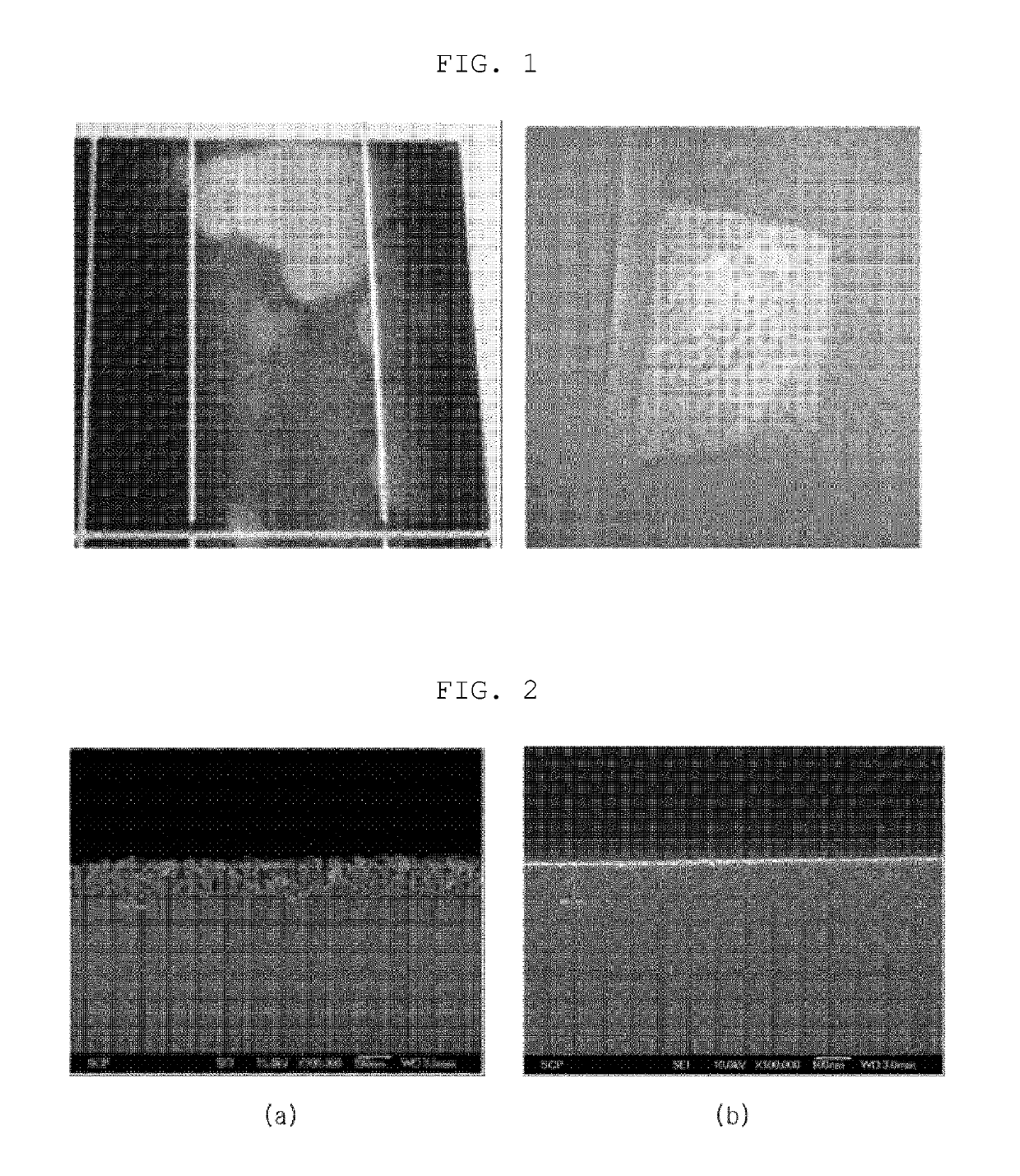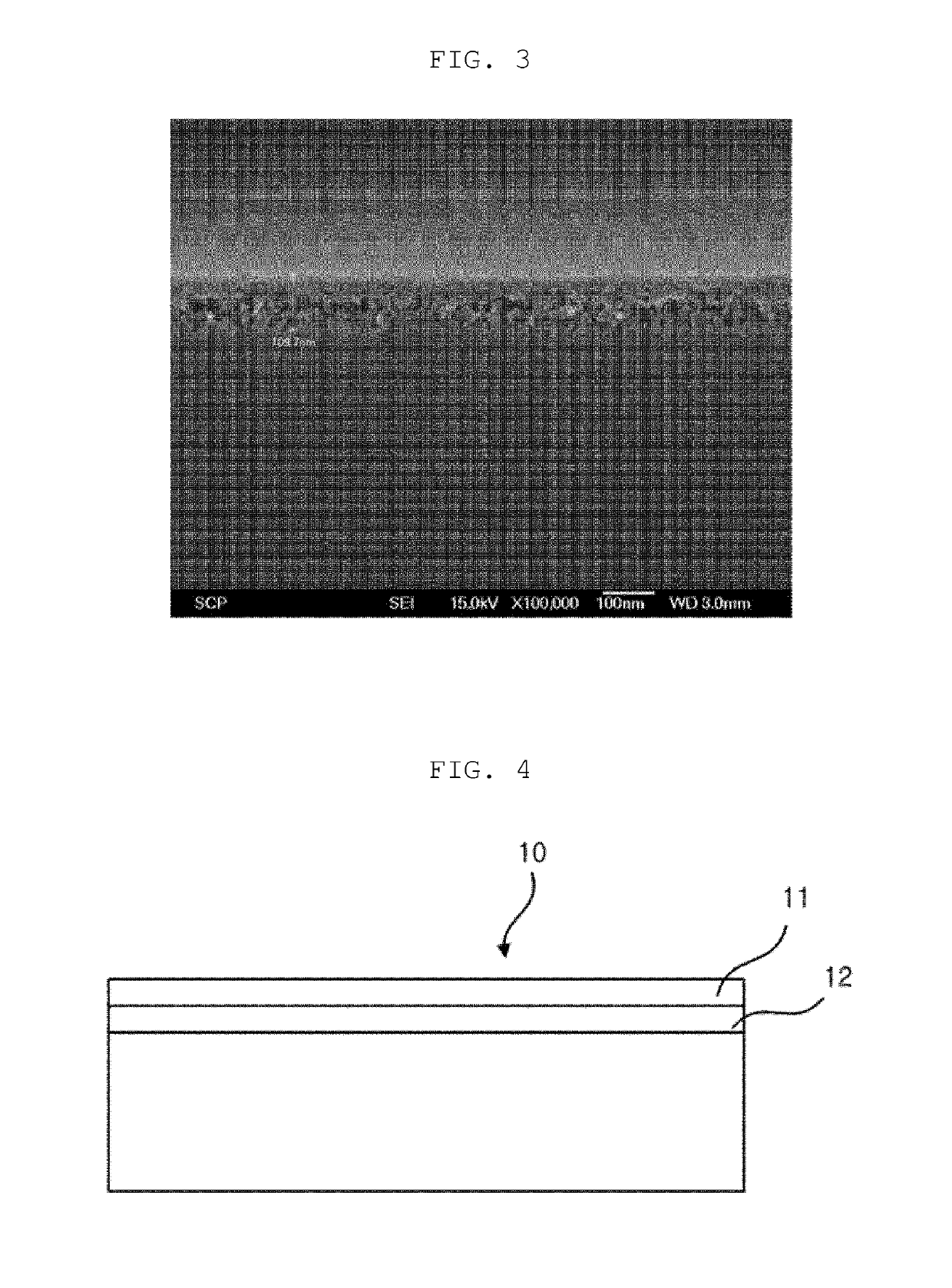Anti-reflection glass substrate and method for manufacturing same
a technology of anti-reflection glass and substrate, which is applied in the direction of coatings, instruments, optics, etc., can solve the problems of easy fouling of impurities and increase manufacturing costs, and achieve the effects of reducing contamination defects, high transmittance characteristics, and reducing fouling defects
- Summary
- Abstract
- Description
- Claims
- Application Information
AI Technical Summary
Benefits of technology
Problems solved by technology
Method used
Image
Examples
examples
[0043]1. Antifouling Characteristics and High-Transmittance Characteristics Through Formation of Multilayer Anti-Reflective Layer
[0044]In order to compare levels of reflectivity due to the formation of multilayers, the levels of transmittance of glass substrates having anti-reflective layers were measured using an ultraviolet-visible light spectrometer (Perkin-Elmer Lamda 950).
[0045]Each of the glass substrates used in the present test is formed from low-iron soda-lime glass, with a pattern being formed on the bottom abutting ethylene-vinyl acetate (EVA). When the transmittance is measured in this state, incorrect data may be obtained. It is therefore required to measure transmittance by avoiding light scattering due to the pattern. Methods of avoiding light scattering due to the pattern include a method of removing the pattern by polishing before measuring the transmittance and a method of removing the effect of the pattern by applying a solution, the refractive index of which is s...
PUM
| Property | Measurement | Unit |
|---|---|---|
| porosity | aaaaa | aaaaa |
| porosity | aaaaa | aaaaa |
| thickness | aaaaa | aaaaa |
Abstract
Description
Claims
Application Information
 Login to View More
Login to View More - R&D
- Intellectual Property
- Life Sciences
- Materials
- Tech Scout
- Unparalleled Data Quality
- Higher Quality Content
- 60% Fewer Hallucinations
Browse by: Latest US Patents, China's latest patents, Technical Efficacy Thesaurus, Application Domain, Technology Topic, Popular Technical Reports.
© 2025 PatSnap. All rights reserved.Legal|Privacy policy|Modern Slavery Act Transparency Statement|Sitemap|About US| Contact US: help@patsnap.com


